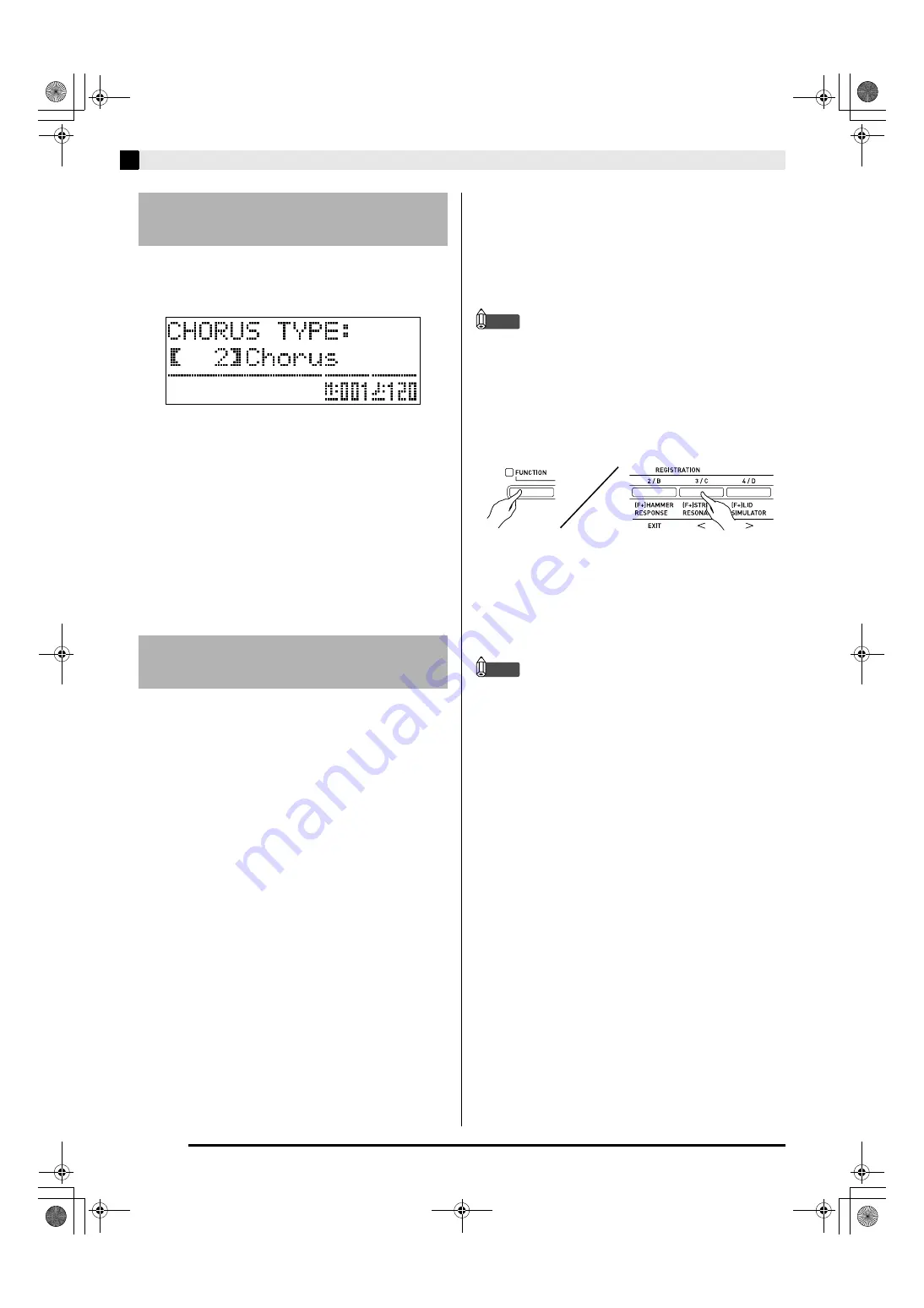
E-10
Using Built-in Tones
1.
While holding down the
cs
(FUNCTION)
button, press the
dl
(CHORUS)
button.
This will display a chorus type selection screen.
2.
Use the
ct
(
w
,
q
)
buttons to select the
chorus type you want.
•
The following shows the five available chorus type
settings.
0: OFF (no chorus)
1: Light Chorus
2: Chorus
3: Deep Chorus
4: Flanger
3.
Press the
cs
(FUNCTION)
button.
This exits the chorus type selection screen.
The tones of your digital piano have built-in elements
that give them the characteristic reverberation of an
acoustic piano. Each of these elements can be
individually adjusted to one of four levels.
z
HAMMER RESPONSE
z
STRING RESONANCE
z
LID SIMULATOR
NOTE
•
Opening or closing the digital piano’s lid does not
affect the LID SIMULATOR setting.
1.
While holding down the
cs
(FUNCTION)
button, press the button that corresponds to
the element whose setting you want to
change.
2.
Use the
ct
(
w
,
q
)
buttons to select the
settings type you want.
3.
Press the
cs
(FUNCTION)
button.
This exits the element type selection screen.
NOTE
•
In addition to the above, piano tones also have a
KEY OFF SIMULATOR.
z
KEY OFF SIMULATOR
Adding the Chorus Effect to
the Tone
Adjusting Acoustic Piano
Sound Characteristics
Controls the time deviation between when a key is
pressed and when the note actually sounds.
Settings
1: Fast 2: Grand piano feel 3: Slightly slower
4: Slow
Adjusts the characteristic reverberation (string
resonance) of an acoustic piano.
You can select a reverberation setting that matches
the song being played or your own personal
preference.
Settings
1: Suppressed 2: Slightly suppressed
3: Reverberation 4: Strong reverberation
Adjusts how sound resonates in accordance with the
opening state of a grand piano lid.
Settings
1: Lid closed 2: Lid opened slightly 3: Lid fully open
4: Lid removed
Causes notes to decay when keyboard keys are
released.
AP650_e.book 10 ページ 2012年7月17日 火曜日 午後4時5分













































